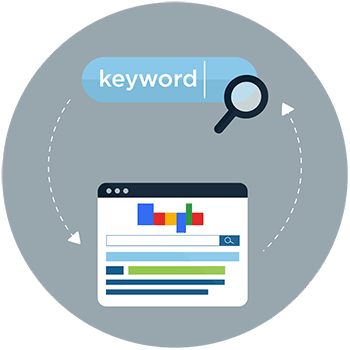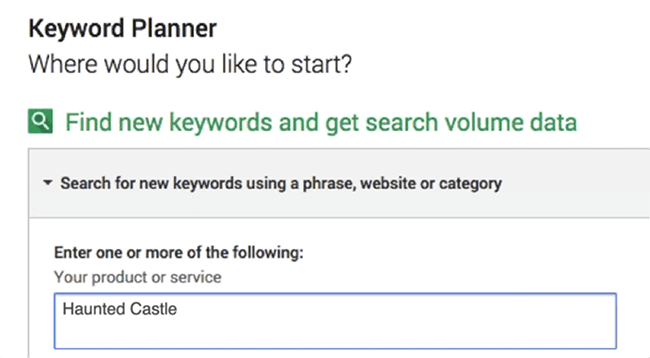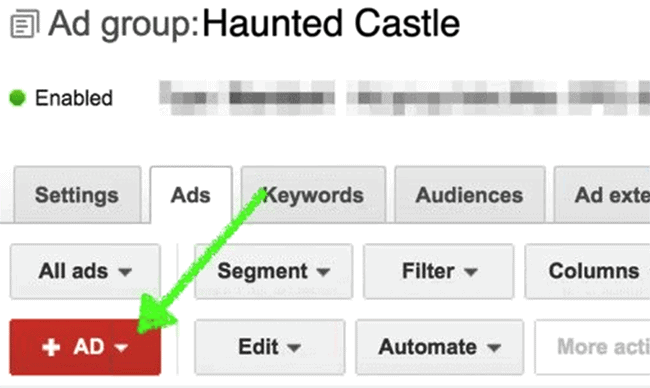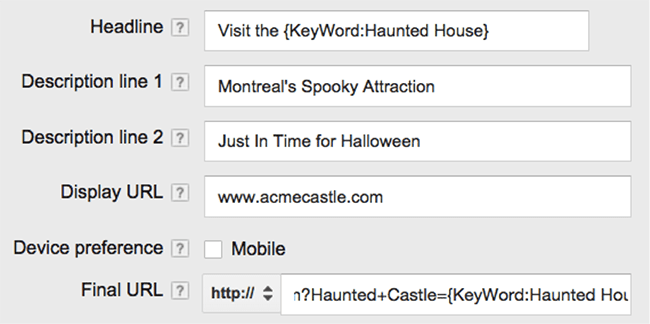If you want to be successful with PPC ads, you need to demonstrate that you understand what prospects are looking for and serve up a relevant ad experience to match.
If you fail to communicate a cohesive message or fulfill the promise you make with your ad, you could face some nightmarish consequences. (Even scarier than that time you accidentally sent out a marketing email with the intro “Hey <FIRST_NAME>.”)

We’re talkin’ consequences including:
- Poor Quality Score
- High bounce rates
- Pricy cost-per-click (CPC)
- Low clickthrough rates
To avoid an ad spend disaster, you want your PPC ads to be hyper relevant.
Relevance ensures you get the clicks you deserve, people find what they need, Google trusts your page (because you deliver what you say you do), and you earn a high Quality Score. Your ads could also cost less and earn better placement.
Fortunately – as we learned in a recent Unwebinar with Bloom Search Marketing’s Martin Perron and Andrew Alkhouri – you can convey relevance from ad to landing page by using AdWords Keyword Insertion. Even better? You can use this AdWords feature in combination with Dynamic Text Replacement (DTR) in Unbounce to extend the same relevance through to your landing page.
Brush up on Bloom Search Marketing’s PPC takeaways by watching the webinar recording here, or read on for some distilled wisdom.
First thing’s first…
Keyword Insertion: Serving up relevant ads
Keyword Insertion (the feature formerly known as Dynamic Keyword Insertion) is an advanced AdWords feature that allows you to create an ad that responds to search queries and updates based on Keywords in a specific ad group.

In other words, you can swap out your ads’ headline or description text based on the keywords prospects actually search for.
This feature is helpful because it takes less time to set up than creating separate ads for each possible query, but also because everyone searches Google differently. While one person might search for “Halloween house,” another might search for “Halloween castle”; still another might look for “ Halloween activities.”
If you set up Keyword Insertion correctly, you can appear as an exact match for each of these terms (your headline or description text keywords will swap) and more searchers will see your offer as especially relevant to their needs.
Selecting especially relevant keywords
As Martin pointed out in the webinar, the first step in setting up Keyword Insertion correctly is to decide on the most worthwhile keywords for your business, with the help of Google’s Keyword Planner.
As an example, let’s say you just published a landing page offering 15% off tickets to your annual Halloween attraction, the “ACME Haunted Castle,” and now you need to drive some traffic to your new page.
Ideally, you want some PPC ads to appear when someone searches Google for keywords like “Halloween House,” “Haunted Mansion,” and “ACME Castle,” for example, because people actively searching for these terms are demonstrating high purchase intent (they already know what they’re looking for), and are far more likely to click through from your ad to landing page and convert.
To get started, you’d navigate to the planner from the tools menu in your AdWords account:

Then, type in search terms relevant to your campaign.

Here Google will indicate the popularity of the suggested keywords. You’ll see the average monthly search numbers, how competitive a keyword is, and even suggested bids.
As Martin warns, not all of the suggested keywords will be a perfect match for what you offer, so be selective and ask yourself if each term is truly connected to your business.
Select the type of keywords that’ll work for Keyword Insertion
When setting up your ad, you can choose from four different types of keywords: exact match, phrase match, broad match, and modified broad match. In the webinar, Martin focused on exact and phrase match (but you can read about all four types here):
- Exact match, as it sounds, ensures that your ad is only displayed when the user’s query matches your keyword exactly (i.e. “Haunted Castle”)
- Phrase match applies to search queries with extra words either before or after the keyword. Phrase match would allow your ad to appear when someone searches “Best Haunted Castle,” or “Haunted Castle in Montreal,” for example.
When using Keyword Insertion, it’s best to stick with exact and phrase match as these types of keywords provide precise targeting and can help you attract those with a clearer idea of what they are searching for (i.e. quality leads more likely to convert). These types of keywords also prevent you from having misspelled or misplaced words in your ads.

Once you’ve selected some exact and phrase match keywords to use, you’ll add the keywords to your ad group. At Bloom Search Marketing, Martin noted that he tends to use ad groups containing about 15-20 keywords per group.
As a rule of thumb, if you can swap out one keyword for another in the same ad and still have it make sense, then you’ve got a good group of keywords for a single ad group.
Bonus tip:
Pay close attention to the search terms used in conjunction with keywords related to your business, because they can say a lot about the searcher’s intent.
For example, someone searching for “Halloween costume ideas” is likely to be in the research phase, whereas someone searching for, “Halloween vampire costume” could be ready to buy.
Different sets of keywords with different intent will require their own ad group, ad, landing page and offer to match.
Adding Keyword Insertion to your text ad
Once you’ve selected the keywords you want to target and have added them to an ad group, it’s time to build your ads.
In your ad group, click the big red “+AD” button to get started writing a new text ad.

From there, you can enter your copy.
Add the Keyword Insertion feature by adjusting the headline using the syntax Google recognizes: “{KeyWord: Default Text}.” (Make sure to replace “Default Text” with something generic that will appear if none of the other keywords do).

Dynamic Text Replacement: Serve up a relevant landing page
Finally, you’ll add the URL for the landing page your ad will direct to.
This is where the second indispensable PPC tool comes in: an Unbounce feature called Dynamic Text Replacement (DTR).
DTR allows you to swap out the text on your landing page – so that your ads and landing page will present exactly what visitors searched for.
Clicked an ad about a Haunted House? That’s what you’ll find in the landing page headline! This allows you to ensure that your prospect is seeing an exact match to their query, from the ad all the way to the landing page headline.
Maintaining this sort of message match increases conversions because it reassures people they’ve come to the right place.
If you’re using a landing page with DTR, make sure you update with the URL containing the DTR parameter, like this:

From there, you’ll simply set up a dynamic piece of text on your Unbounce landing page (for where you’d like the keyword swap to take effect). Your headline, metadata title, page description and call to action are all great options for this.
Relevance is key
Great marketing is about creating seamless experiences for prospects.
When you match your ad and landing page headline to the keyword that your prospect is searching for, you demonstrate that you understand what they want and are ready to offer it to them.
But you also demonstrate to Google that you’re putting your money where your mouth is — which ultimately increases your Quality Score and CTR, while lowering your CPC.
How’s that for a win-win?
Informative article it was an amazing kindly share more stuff with us so we can understand better.
ReplyDeleteMore details
PPChero